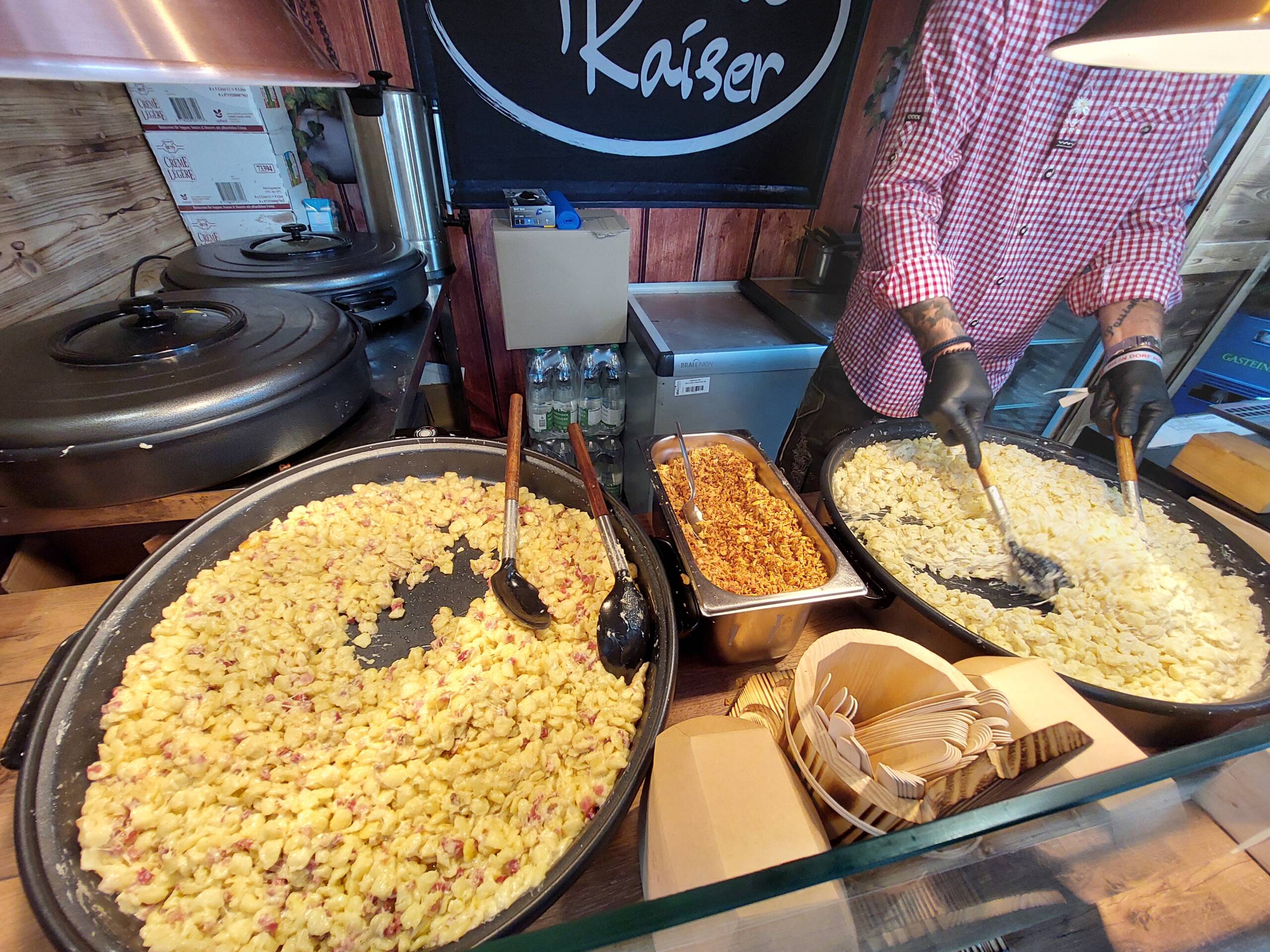There’s something instantly comforting about walking up to a market stall and seeing two giant black pans brimming with golden, soft, freshly made Spätzle. The photo captures it perfectly: one pan filled with a creamy, cheesy version, speckled with little bites of ham or bacon, while the other glistens with a simpler, buttery version, still being worked over with big spatulas by a man in a red-checked shirt and black gloves. In between them sits a tray of crispy golden-brown fried onions—the essential topping that gives Käsespätzle its soul, that crunch against the pillowy noodles. To the side, paper trays and wooden forks are neatly stacked, ready for hungry hands, as if the scene is inviting you to step right in, pay your few euros, and walk away with a steaming portion that smells of Alpine kitchens.

Spätzle itself is such a humble yet deeply satisfying dish. At its core, it’s just flour, eggs, and water pushed through a special press into boiling water. But in Austria and southern Germany, it becomes something more. With cheese melted into every fold and those onions scattered on top, it turns into Käsespätzle—the German-speaking world’s answer to mac and cheese, but richer, denser, and with a touch more rustic charm. Watching it made in bulk, as in this market stall, adds another dimension; there’s a hypnotic satisfaction in seeing a mountain of noodles transformed into comfort food for the crowd. The smell of butter, caramelizing onion, and melted cheese wafts through the air, and even if you weren’t planning to stop, you suddenly find yourself queuing up.
It’s also one of those foods that bridges the gap between tourists and locals. A Viennese worker popping out for lunch, a family with kids on a day out, and a traveler stumbling across the stall at the Prater fairground or a Christmas market—all end up tucking into the same warm, cheesy, starchy delight. It’s the kind of meal that doesn’t need translating; you taste it once and understand why it’s been loved for centuries in Alpine kitchens. And, honestly, when served out of giant pans like this, with ladles of steaming Spätzle piling into your tray, it feels less like fast food and more like being adopted into someone’s home kitchen, if only for a few bites.
Leave a Reply